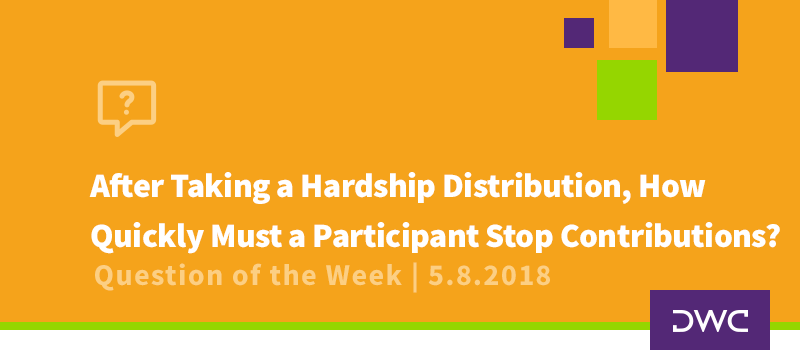
An Employee Joined the Plan Too Soon: No Harm, No Foul or Failure In Need of a Fix?
Facts
In order to be eligible for our company’s 401(k) plan, employees must have worked for us for at least a year and be a minimum of 21 years old. They can join the plan on the next January 1st or July 1st following the date they meet those requirements. Recently, we discovered that we allowed an employee to start contributing to the plan before he met those requirements. He also received company matching contributions.
Question
Is this something we have to fix since we were being more generous than what the plan calls for? If so, what is the best way to correct it and get the plan back on track?
Answer
The bad news is that this mistake must be corrected in order to bring the plan back into compliance. While it might seem it isn’t a big deal to accidentally let someone into the plan early, it is still considered an operational failure any time you do not follow the provisions spelled out in the plan document, exactly as written. We have seen the IRS hand out some pretty hefty fines for seemingly inconsequential mistakes, even when those mistakes favored employees to the detriment to the owner of the company.
The good news is that there are a couple of options available and both are relatively straight-forward.
Option #1
The first option includes four steps:
- Stop contributions (both deferrals and company contributions) right away so that no new errant contributions make their way into the plan.
- Distribute the mistaken 401(k) deferrals to the employee (adjusted for any investment gains or losses). If being corrected before the employee’s plan eligibility date, simply distribute the entire deferral account balance. Note that there is no mandatory 20% federal income tax withholding on this payment.
- Issue a Form 1099-R to the employee, showing the amount distributed. The payment is subject to income tax in the year distributed, and it is not subject to the 10% early withdrawal penalty. The due date for the Form 1099-R is January 31st of the year following the year of the payment, but some recordkeepers will issue it at the same time they cut the check.
- Transfer all errant company contributions (adjusted for investment gains or losses) to a “suspense account” within the plan. Again, if correction is being made before the employee’s eligibility date, transfer the entire balance of the company contribution accounts. It is important to move these amounts into a suspense account rather than the plan’s forfeiture Although they might appear similar, suspense accounts must generally be allocated to participants, while forfeitures may be available for other uses such as paying certain plan fees.
Option #2
The second option is for the company to adopt a retroactive amendment to align the plan’s eligibility requirements with what was actually done. For example, if the employee in question was allowed to join the plan the first of the month after he was hired, the retroactive amendment would reduce the waiting period from one year to immediate and change the plan entry dates from semi-annual to monthly.
While this option might seem like the much easier route to go, it comes with several strings attached.
- Be sure the retroactive amendment is properly worded. Most plan documents offer the flexibility to apply the amendment only to the affected employee(s) rather than to every new hire. However, if the amendment isn’t specifically written that way, it means all new hires are retroactively made eligible for the plan, which can not only be expensive, but it can also lead to other compliance problems.
- Because this option makes the plan more generous, it is generally only available if the employees involved in the mistake are predominantly non-highly compensated. In other words, you cannot use this option as a disguised way to let HCEs join the plan early. We say “generally” because the retro amendment can sometimes be used for HCEs, but it typically involves a formal application for approval from the IRS – a lengthy and relatively expensive process.
- Either the amendment or the accompanying resolution should reference that the correction is being made pursuant to the IRS correction program (called the Employee Plans Compliance Resolution System, or EPCRS, because everything has to be an acronym).
- This option cannot be used habitually. One of the underlying principals of EPCRS is that plan sponsors must have practices and procedures in place, designed to avoid failures. If the same mistake is occurring over and over again, it is hard to make the argument that there are solid practices and procedures in place.
Correctly applying the eligibility requirements is a foundational component of maintaining your plan’s operational compliance. Not sure whether things are working properly? No problem. Just give us a call, and we can help you review the situation.
For additional information about eligibility and plan corrections, please visit out Knowledge Center here and here. Also, be sure to check out our new Correction of the Quarter series.


















